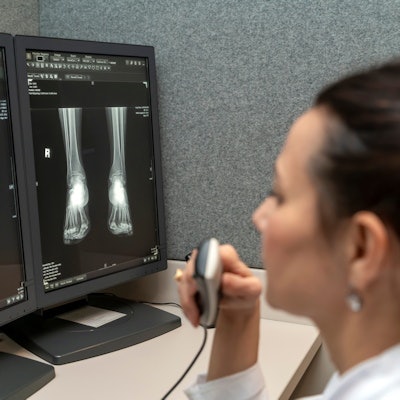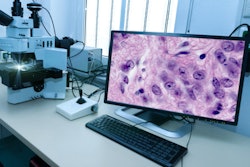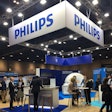
When the first reported cases of COVID-19 emerged in the U.S. in the spring of 2020, many radiology groups shifted the way they worked to allow their radiologists to read imaging studies from home. This shift initially required an adjustment in both mindset and in the technological logistics of setting up at-home workstations.
Nearly three years into the pandemic, many radiology groups have now successfully navigated the hurdles and fully embraced remote reading, a practice that appears here to stay. Before the pandemic, many radiology groups limited remote reading, if they allowed it at all.
 Dr. Eliot Siegel.
Dr. Eliot Siegel.But when the pandemic began, practices -- particularly hospital-based departments -- leaned into remote reading to reduce the spread of COVID-19.
"The practice of reading remotely was tremendously accelerated," said Dr. Eliot Siegel, professor and vice chair of research information systems at the University of Maryland School of Medicine and chief of radiology and nuclear medicine at the Veterans Affairs (VA) Maryland Healthcare System, both in Baltimore, Maryland. "At the University of Maryland, we switched to almost all reading from home for radiologists and residents. At the VA, for the first time, people were able to read remotely for both routine and off-hours purposes."
 Dr. Michael Recht.
Dr. Michael Recht.Now, even with fewer restrictions necessary to control the spread of COVID-19, many groups, such as the University of Maryland and NYU Langone Health in New York, are continuing to allow radiologists to read imaging studies from home, at least part of the time.
"What happened in COVID is we gave home workstations to all of our radiologists because of social distancing," explained Dr. Michael Recht, Louis Marx Professor and chair of radiology at NYU Langone Health. "People started liking it. So now, everybody is essentially allowed to read, depending on the section and how many people are on the section, one or two days a week from home. People really like that, and it hasn't decreased productivity at all. It really has no negative ramifications on our ability to read."
Changing view of remote reading
Although radiologists have come to appreciate remote reading as a result of the pandemic, some didn't always favor the practice. According to Dr. Jorge Ramirez, practice president at RP Matrix, a physician-led internal teleradiology division of Radiology Partners, the perception among many radiologists before the pandemic was that remote groups were less robust than those in a practice or hospital.
 Dr. Jorge Ramirez.
Dr. Jorge Ramirez."Before it was like, 'Remote radiologists are not good quality or remote radiologists don't have a good life or remote radiologists don't talk with the clinician,' " he said. "All of that just obviously is not correct. But there had been a bit of a stigma before."
One of the few hospital-based radiology groups that routinely leveraged remote reading before the pandemic was at Lahey Hospital and Medical Center in Burlington, Massachusetts. In 2019, radiologists in that group began reading from home one day a week to improve work/life balance, particularly enabling childcare flexibility for those with young families at home, said Dr. Christoph Wald, chair of radiology at Lahey Hospital and Medical Center.
That move turned out to be especially fortuitous when the pandemic hit.
 Dr. Christoph Wald.
Dr. Christoph Wald."When the pandemic happened, we were able to just switch everybody to remote because we already had the infrastructure in place," Wald said. "We looked like geniuses, but we had initially started remote reading for other reasons. Now that people are back in the hospital, our radiologists are back to doing clinical work one or two days a week from home to reduce aggregate commuting time, limit spread of viral illness in the winter months, and increase flexibility with shift coverage and childcare."
Unlike at Lahey, few radiologists at the University of Maryland School of Medicine routinely read imaging from home before COVID-19, but that quickly shifted with the onset of the pandemic. Now, even though most of the pandemic restrictions have lifted, many of the hospital's radiologists continue to frequently read remotely, said Siegel, who himself reads from home most of the time.
"Over the last several months, radiologists have been slowly trickling back to the hospital at the University of Maryland, but it's certainly not 100%," he explained. "For those who don't do procedures, which is the majority of radiologists, it seems to be somewhat optional as to whether one is in the hospital or not. Now people understand that there's the option, potentially, of being able to do it both ways."
Ramirez calls the proliferation of remote reading among radiology groups a silver lining to the pandemic.
"It gave people the opportunity to realize that remote radiology is absolutely a possible way to have a radiology career without compromising anything out of it," he said. "Practices that had never used remote or considered remote are beginning to open remote positions, which is fantastic in my opinion. Being able to read from home once in a while or read from home all the time increases efficiency, and it increases radiologist satisfaction to a degree."
Leveraging technology to adapt
Radiologists would have been unable to make the shift to remote reading without technology. In some cases, radiologists have workstations at home that mirror those in the hospital; in other cases, they use laptops with advanced operating systems and docking stations that connect to high-resolution monitors. Siegel, who has a workstation at one of his houses and a laptop at the other, said that while the workstation is slightly faster than the laptop, both solutions work well.
 Marc Parente.
Marc Parente."Most of our radiologists get our laptops," he said. "The laptops are advantageous because they're relatively lightweight in comparison to a bulky workstation, and when there are problems, the radiologists can bring the laptops in so that IT, biomedical engineering, or a PACS administrator can take a look."
At NYU Langone Health, the radiologists have traditional workstations at home. Marc Parente, radiology IT operations manager at NYU Langone, said his department supplies the radiologists with fully loaded computer towers and 32-inch monitors.
"We in radiology IT actually build out the workstations in-house with the software that's needed for the calibrations and the bi-weekly visual checks that the city mandates, and then we coordinate with the radiologists to ship the workstations to their homes," Parente explained. "When the workstation arrives in their home, the radiologist receives a diagram of where each cable plugs into what port, but a lot of times, they like to work with us over the phone, and we guide them through the process of setting up their workstation."
Each group has its own way of calibrating monitors and troubleshooting issues. At NYU Langone, the radiology IT team sends radiologists photometer pucks and then walks them through the monitor calibration process and other quality checks over the phone. At Lahey, radiology informatics team members travel to each radiologist's home to set up their workstations, calibrate their monitors, and troubleshoot and resolve issues that can't be handled remotely.
"We built that into our support expectation for the radiology informatics team, and thankfully, they were willing to take that on," Wald said. "We've got about 40 of these workstations deployed, and it seems to be manageable. I haven't heard any complaints. The radiologists are very happy to receive that level of service."
Enduring approach to radiology
Given the success that radiology groups have experienced with remote reading, the radiologists interviewed for this article all agreed that it's likely to endure. That said, not all radiologists are able to read from home. While interventional and neurointerventional radiologists must be onsite to perform procedures, breast radiologists must also be onsite in part due to technology constraints. The ultrahigh-resolution monitors that are necessary to read mammograms typically cost tens of thousands of dollars, so most groups won't put them in people's homes. That could soon change at NYU Langone, however.
"We've been able to find workstations that meet all of the criteria for 5K monitors," Recht said. "We've tested them out, and we've been able to get them to a price that's reasonable. People have started doing some remote diagnostic mammograms carefully, mindfully with certain groups of patients, and we're going to pilot that. It will give us even more capability of letting the breast imagers read from home and have that break to improve their work/life balance, as well."
Even as radiology groups continue, and in some cases expand, remote reading, radiologists are mindful of the need to maintain some level of in-person interaction with colleagues, referring physicians, and patients.
"There's tremendous value in being able to have a better work/life balance and working remotely, but we also know that people connecting one-on-one is just not as good on Zoom or Teams as it is physically being there," Siegel said. "Supplementing working remotely with going in and establishing and reestablishing those relationships has been really important to me, and it really makes a difference. I still love the idea of seeing people one-on-one not only in the hospital in our normal working environment but also at conferences, like RSNA and other radiology conferences. It's great to be able to see people again."



















